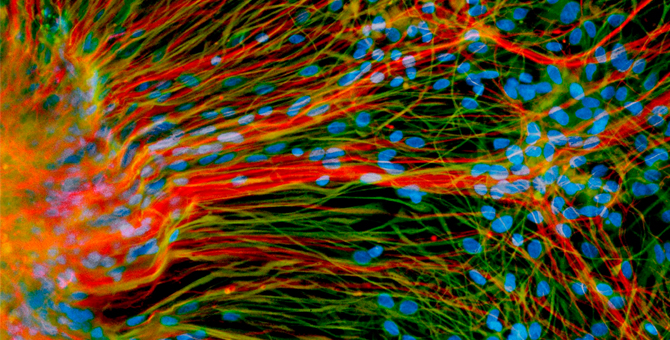The Ministry of Science and Technology released eight directions for the development of stem cell research
On May 23, the Ministry of Science and Technology issued the "Notice on Soliciting Opinions on the 6 Key Projects for the 2018 Special Projects on Stem Cell and Transformation Research of the National Key Research and Development Program" (hereinafter referred to as the Notice), on stem cell and transformation research, nanotechnology, Six key special projects for the 2018 annual project of quantum control and quantum information, protein machinery and life process regulation, research on the frontier of large scientific devices, global change and coping, and so on, are invited to seek opinions and suggestions from the society. From this we can also understand the current direction of stem cell research, and the time for comments is from May 24, 2017 to June 7, 2017.
The following are the details of the three major key projects related to biomedicine related to the 2018 annual project application guideline (draft for comment):
Annex 1 “Stem Cell and Transformation Research†Key Special Project 2018 Project Declaration Guide (Draft for Comment)
1. Establishment and maintenance of pluripotent stem cells
1.1 Apparent precision regulation of stem cell pluripotency
Research content: pluripotency maintenance, pluripotent state transition and cell reprogramming process, non-coding RNA, new RNA modification and novel protein modification for precise regulation of pluripotency.

Assessment indicators: 5-7 kinds of lncRNA or other related molecules regulating human stem cell pluripotency were discovered, revealing the mechanism of precise regulation of stem cell fate; clarifying the relationship between the above molecules and stem cell status and quality; establishing 1-2 lncRNA genetic tracing The system reveals the effects and mechanisms of 3-5 lncRNA epigenetic proteins and post-translational modifications on human-derived-primary embryonic stem cell transformation.
1.2 heterochromatin regulation stem cell pluripotency
Research content: Heterochromatin histone modification and telomere heterochromatin region regulate stem cell pluripotency.
Assessment indicators: found that heterochromatin or transposon affects the law of pluripotent stem cell fate and regulation, clarifies 2-3 new mechanisms; reveals the mechanism of telomere and other heterochromatin regions affecting transposon insertion and activation, and obtains 3 New findings above; analysis of 3-4 regulatory transposon insertion and activation of the genome's heterochromatin histones, regulatory proteins and complex structures and functions.
1.3 key subcellular level events regulate stem cell pluripotency
Research content: changes in organelle function, component remodeling, metabolic changes and related new signals during pluripotent stem cell fate maintenance, self-renewal and directed differentiation.
Assessment indicators: Elucidation of the characteristics of three or more key subcellular levels of endometrial system membrane transport, mitochondrial ion signaling, energy metabolism pathways and products in endosome/autophagosome/mitochondria during pluripotent stem cell fate regulation; The event regulates cell fate, mediates 3-5 new mechanisms of novel nuclear function patterns, and clarifies its biological significance.
2. Tissue stem cell acquisition, function and regulation
2.1 Tissue stem cell function subgroup and efficacy evaluation
Research contents: Heterogeneity of mesenchymal stem cells and hematopoietic stem cells and molecular markers, regulatory mechanisms, functional characteristics and therapeutic evaluation of functional subpopulations.
Assessment index: identify the molecular marker system and functional characteristics of not less than three stem cell functional subpopulations; analyze the key regulatory factors and mechanisms of no less than three functional subpopulations; establish the separation, identification and expansion of corresponding stem cell functional subpopulations Augmentation system; combined with a non-human primate model to evaluate the therapeutic effect of the above-mentioned stem cell function subpopulation.
2.2 Regulation and significance of stem cell fate in regeneration
Research content: attribute transformation and fate determination mechanism of different cell groups and their effects on tissue regeneration during tissue damage and repair.
Assessment indicators: establish 1-2 multi-spectral simultaneous in-vivo tracer techniques; establish 1-2 humanized animal models and 1-2 inducible tissue damage models to achieve local and large-area damage and induce cell properties Conversion. Revealing 1-2 new mechanisms for cell and related factors regulating cell property turnover and stem cell fate in the microenvironment. Elucidation of 1-2 molecular mechanisms by which cells respond to damage to microenvironmental signals.
There are several main ingredients of Milk Replacer: 1. Plant protein - soybean meal, soybean protein concentrate, rice protein, potato protein and so on. 2. Milk protein - whey protein, casein 3. Sugar - lactose, glucose and other milk replacer powder is mainly the source of raw materials, a good milk replacer should have a high content of milk protein, lactose, and a high protein digestibility and palatability.
Fat Filled Milk Powder,Milk fat powder,High fat milk Powder
KARAK , https://www.jskarak.com